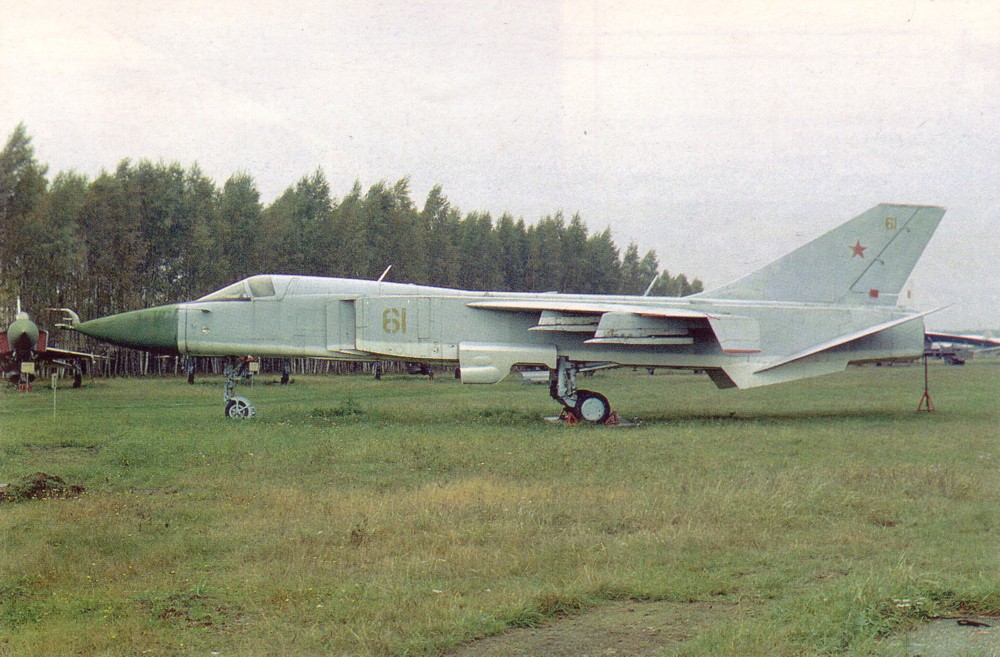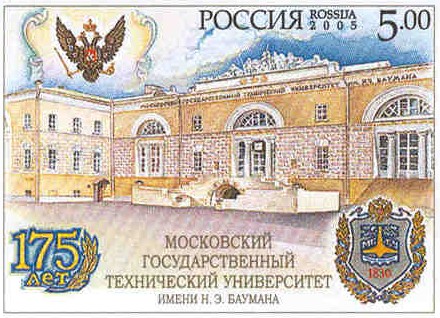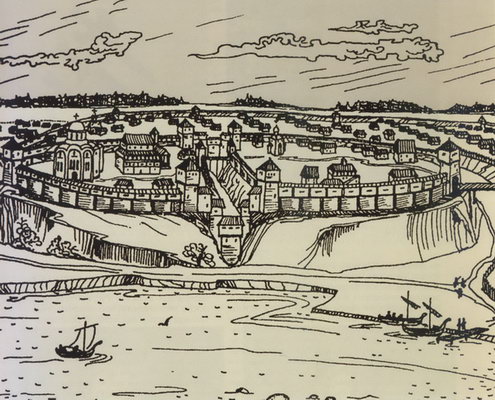|
Pavel Sukhoi
Pavel Osipovich Sukhoi (russian: Па́вел О́сипович Сухо́й; be, Па́вел Во́сіпавіч Сухі́, ''Paviel Vosipavič Suchi''; 2 July 1895 – 15 September 1975) was a Soviet aerospace engineer and aircraft designer known as the founder of the Sukhoi Design Bureau. Sukhoi designed military aircraft with Tupolev and Sukhoi for 50 years, and produced many notable Soviet planes such as the Sukhoi Su-7, Su-17, and Su-24. His planes set two altitude world records (1959, 1962) and two world speed records (1960, 1962). Sukhoi was honored in the Soviet Union as a Hero of Socialist Labor and awarded the Order of Lenin three times. Biography Pavel Osipovich Sukhoi was born 22 July 1895 in Hlybokaye, Vilna Governorate of the Russian Empire, to ethnic Belarusian parents of peasant background. He had five sisters and no brothers. In 1900, Sukhoi's family moved to Gomel when his father, Osip Andreevich Sukhoi, got a job as a teacher at a school for the child ... [...More Info...] [...Related Items...] OR: [Wikipedia] [Google] [Baidu] |
Russia
Russia (, , ), or the Russian Federation, is a transcontinental country spanning Eastern Europe and Northern Asia. It is the largest country in the world, with its internationally recognised territory covering , and encompassing one-eighth of Earth's inhabitable landmass. Russia extends across eleven time zones and shares land boundaries with fourteen countries, more than any other country but China. It is the world's ninth-most populous country and Europe's most populous country, with a population of 146 million people. The country's capital and largest city is Moscow, the largest city entirely within Europe. Saint Petersburg is Russia's cultural centre and second-largest city. Other major urban areas include Novosibirsk, Yekaterinburg, Nizhny Novgorod, and Kazan. The East Slavs emerged as a recognisable group in Europe between the 3rd and 8th centuries CE. Kievan Rus' arose as a state in the 9th century, and in 988, it adopted Orthodox Christianity from t ... [...More Info...] [...Related Items...] OR: [Wikipedia] [Google] [Baidu] |
Sukhoi Su-24
The Sukhoi Su-24 (NATO reporting name: Fencer) is a supersonic, all-weather attack aircraft developed in the Soviet Union. The aircraft has a variable-sweep wing, twin-engines and a side-by-side seating arrangement for its crew of two. It was the first of the USSR's aircraft to carry an integrated digital navigation/attack system. It remains in service with the Russian Air Force, Syrian Air Force, Ukrainian Air Force, Algerian Air Force and various other air forces to which it was exported. Development Background One of the conditions for accepting the Sukhoi Su-7B into service in 1961 was the requirement for Sukhoi to develop an all-weather variant capable of precision air strikes. Preliminary investigations with ''S-28'' and ''S-32'' aircraft revealed that the basic Su-7 design was too small to contain all the avionics required for the mission. OKB-794 (later known as Leninets) was tasked with developing an advanced nav/attack system, codenamed ''Puma'', which would be at ... [...More Info...] [...Related Items...] OR: [Wikipedia] [Google] [Baidu] |
World War I
World War I (28 July 1914 11 November 1918), often abbreviated as WWI, was one of the deadliest global conflicts in history. Belligerents included much of Europe, the Russian Empire, the United States, and the Ottoman Empire, with fighting occurring throughout Europe, the Middle East, Africa, the Pacific, and parts of Asia. An estimated 9 million soldiers were killed in combat, plus another 23 million wounded, while 5 million civilians died as a result of military action, hunger, and disease. Millions more died in genocides within the Ottoman Empire and in the 1918 influenza pandemic, which was exacerbated by the movement of combatants during the war. Prior to 1914, the European great powers were divided between the Triple Entente (comprising France, Russia, and Britain) and the Triple Alliance (containing Germany, Austria-Hungary, and Italy). Tensions in the Balkans came to a head on 28 June 1914, following the assassination of Archduke Franz Ferdi ... [...More Info...] [...Related Items...] OR: [Wikipedia] [Google] [Baidu] |
Imperial Russian Army
The Imperial Russian Army (russian: Ру́сская импера́торская а́рмия, tr. ) was the armed land force of the Russian Empire, active from around 1721 to the Russian Revolution of 1917. In the early 1850s, the Russian Army consisted of more than 900,000 regular soldiers and nearly 250,000 irregulars (mostly Cossacks). Precursors: Regiments of the New Order Russian tsars before Peter the Great maintained professional hereditary musketeer corps known as ''streltsy''. These were originally raised by Ivan the Terrible; originally an effective force, they had become highly unreliable and undisciplined. In times of war the armed forces were augmented by peasants. The regiments of the new order, or regiments of the foreign order (''Полки нового строя'' or ''Полки иноземного строя'', ''Polki novovo (inozemnovo) stroya''), was the Russian term that was used to describe military units that were formed in the Tsardom of Rus ... [...More Info...] [...Related Items...] OR: [Wikipedia] [Google] [Baidu] |
Entrance Exam
In education, an entrance examination or admission examination is an examination that educational institutions conduct to select prospective students. It may be held at any stage of education, from primary to tertiary, even though it is typically held at tertiary stage. By country France In France, the Concours Général, taken in the last year of High School (Lycée), is considered to be particularly difficult with only 250 places in all subjects for 15,000 applicants. There is also an entrance examination in order to enter medicine studies. Grandes écoles of engineering and grandes écoles of business are some other examinations. India In India, entrance examinations are chiefly confined to medicine, engineering, and management. These range from the BITSAT and the IIT-JEE -where less than one in a hundred can hope to get admission- to state entrance examinations, which are many and varied. The stiff competition has led to a situation where many students neglect th ... [...More Info...] [...Related Items...] OR: [Wikipedia] [Google] [Baidu] |
Bauman Moscow State Technical University
The Bauman Moscow State Technical University, BMSTU (russian: link=no, Московский государственный технический университет им. Н. Э. Баумана (МГТУ им. Н. Э. Баумана)), sometimes colloquially referred to as the Bauman School or Baumanka (russian: link=no, Ба́уманка) is a public technical university (Polytechnic) located in Moscow, Russia. Bauman University a Russian technical university offering B.S., M.S. and PhD degrees in various engineering fields and applied sciences. History Bauman University is the second oldest educational institution in Russia after Lomonosov Moscow State University (1755). In 1763, the Russian empress Catherine II founded the Educational Imperial House. On October 5 1826 the Dowager Empress Maria Feodorovna issued a decree to establish "great workshops for different crafts with bedrooms, a dining room, etc." as a part of the Moscow Foundling Home in the German Quart ... [...More Info...] [...Related Items...] OR: [Wikipedia] [Google] [Baidu] |
Belarusian State University Of Transport , doctorate degrees in several areas of study. This HE institu ...
Belarusian State University of Transport (BelSUT) () is a university and a non-profit public higher education institution in Gomel, Belarus. Founded in 1953, this institution has also branch campuses in Orsha and Brest. Until 1993, it was called Belarusian Institute of Railway Engineers. Officially accredited/recognized by the Ministry of Education of the Republic of Belarus, BelSUT is a coeducational higher education institution. It offers courses and programs leading to officially recognized higher education degrees such as bachelor degrees, master degrees A master's degree (from Latin ) is an academic degree awarded by universities or colleges upon completion of a course of study demonstrating mastery or a high-order overview of a specific field of study or area of professional practice. [...More Info...] [...Related Items...] OR: [Wikipedia] [Google] [Baidu] |
Gymnasium (school)
''Gymnasium'' (and variations of the word) is a term in various European languages for a secondary school that prepares students for higher education at a university. It is comparable to the US English term '' preparatory high school''. Before the 20th century, the gymnasium system was a widespread feature of educational systems throughout many European countries. The word (), from Greek () 'naked' or 'nude', was first used in Ancient Greece, in the sense of a place for both physical and intellectual education of young men. The latter meaning of a place of intellectual education persisted in many European languages (including Albanian, Bulgarian, Estonian, Greek, German, Hungarian, the Scandinavian languages, Dutch, Polish, Czech, Serbo-Croatian, Macedonian, Slovak, Slovenian and Russian), whereas in other languages, like English (''gymnasium'', ''gym'') and Spanish (''gimnasio''), the former meaning of a place for physical education was retained. School struct ... [...More Info...] [...Related Items...] OR: [Wikipedia] [Google] [Baidu] |
Railway
Rail transport (also known as train transport) is a means of transport that transfers passengers and goods on wheeled vehicles running on rails, which are incorporated in tracks. In contrast to road transport, where the vehicles run on a prepared flat surface, rail vehicles ( rolling stock) are directionally guided by the tracks on which they run. Tracks usually consist of steel rails, installed on sleepers (ties) set in ballast, on which the rolling stock, usually fitted with metal wheels, moves. Other variations are also possible, such as "slab track", in which the rails are fastened to a concrete foundation resting on a prepared subsurface. Rolling stock in a rail transport system generally encounters lower frictional resistance than rubber-tyred road vehicles, so passenger and freight cars (carriages and wagons) can be coupled into longer trains. The operation is carried out by a railway company, providing transport between train stations or freight customer faci ... [...More Info...] [...Related Items...] OR: [Wikipedia] [Google] [Baidu] |
Gomel
Gomel (russian: Гомель, ) or Homiel ( be, Гомель, ) is the administrative centre of Gomel Region and the second-largest city in Belarus with 526,872 inhabitants (2015 census). Etymology There are at least six narratives of the origin of the city's name. The most plausible is that the name is derived from the name of the stream Homeyuk, which flowed into the river Sozh near the foot of the hill where the first settlement was founded. Names of other Belarusian cities are formed along these lines: for example, the name Minsk is derived from the river Menka, Polatsk from the river Palata, and Vitsebsk from the river Vitsba. The first appearance of the name, as "Gomy", dates from 1142. Up to the 16th century, the city was mentioned as Hom', Homye, Homiy, Homey, or Homyi. These forms are tentatively explained as derivatives of an unattested ''*gomŭ'' of uncertain meaning. The modern name for the city has been in use only since the 16th or 17th centuries. History U ... [...More Info...] [...Related Items...] OR: [Wikipedia] [Google] [Baidu] |
Kuzmina
Kuzmin may refer to: *Kuzmin (Sremska Mitrovica) Kuzmin () is a village located in the municipality of Sremska Mitrovica, Serbia. As of 2011 census, the village has a population of 2,982 inhabitants. Name In Serbian, the village is known as ''Kuzmin'' (Кузмин), and in Hungarian as ''Kozm ..., a village in Serbia * Kuzmyn, a village in Ukraine * Kuźmina, a village in Poland * Kuzmin (surname) {{Disambig, geo ... [...More Info...] [...Related Items...] OR: [Wikipedia] [Google] [Baidu] |
Peasant
A peasant is a pre-industrial agricultural laborer or a farmer with limited land-ownership, especially one living in the Middle Ages under feudalism and paying rent, tax, fees, or services to a landlord. In Europe, three classes of peasants existed: slave, serf, and free tenant. Peasants might hold title to land either in fee simple or by any of several forms of land tenure, among them socage, quit-rent, leasehold, and copyhold. In some contexts, "peasant" has a pejorative meaning, even when referring to farm laborers. As early as in 13th-century Germany, the concept of "peasant" could imply "rustic" as well as "robber", as the English term villain/villein. In 21st-century English, the word "peasant" can mean "an ignorant, rude, or unsophisticated person". The word rose to renewed popularity in the 1940s–1960s as a collective term, often referring to rural populations of developing countries in general, as the "semantic successor to 'native', incorporating all its c ... [...More Info...] [...Related Items...] OR: [Wikipedia] [Google] [Baidu] |






